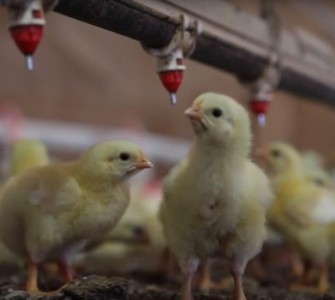5 ways research aims to tackle poultry-sector challenges
Novel, science-based technologies will allow the poultry industry to get ahead of issues coming towards it, Denise Heard, DVM, director of research programs for the US Poultry & Egg Association (USPOULTRY) told Poultry Health Today.
To encourage those new technologies, USPOULTRY typically funds $1 million a year in poultry research. The projects most recently funded focus primarily on disease management and food safety.
A research advisory committee, made up of 15 poultry experts, evaluates proposals and ranks them in terms of benefits for the poultry industry.
Once projects are funded, they last up to 2 years before the results are published.
“We want to continue to grow the research program so we’re able to give back to the poultry industry in a major way,” Heard said.
Here, she outlines five of the latest projects to receive USPOULTRY funding:
Improving Salmonella surveillance in turkeys
A project led by Nikki Shariat, PhD, of the University of Georgia, will investigate high-resolution Salmonella serotyping to improve surveillance of the pathogen in turkeys.
Using novel CRISPR-SeroSeq technology, Salmonella serotype populations will be tracked from breeders to finished products to identify underlying serotypes that are playing a larger role than previously understood.
Usually, one dominant type of Salmonella is cultured from turkeys, but other serotypes of the bacteria may be involved in much lower concentrations.
CRISPR-SeroSeq will identify each serotype of Salmonella within a processing plant, bird population or poultry house. By knowing all the serotypes involved, even those in much lower percentages, producers can decide if autogenous vaccines are needed to control the problem.
Improving ILT vaccination
A North Carolina State University project led by Ravi Kulkarni, PhD, will assess the efficacy of recombinant infectious laryngotracheitis (ILT) vaccines in broiler chickens.
According to Kulkarni, live attenuated vaccines may cause clinical illness, while recombinant vaccines may not always provide an adequate immune response.
But there may be a solution based on the type of adjuvant used. Adjuvants that target specific cells in the birds may improve the effect of recombinant vaccines and help birds develop stronger immunity.
Impact of feed supplements on colibacillosis and APEC
The impact of feed supplements on avian pathogenic Escherichia coli (APEC) is the focus of a research project from the University of Georgia, which will look to evaluate the effects of trace mineral feed supplements on the selection of the pathogen.
Limiting the use of antimicrobials to control disease presents a challenge for combating colibacillosis; consumers want more “natural” products, while producers seek alternatives to control disease outbreaks.
Results of the trials with feed supplements will allow for identification and prediction of virulent and resistant APEC that may emerge or re-emerge as a consequence of changes in production practices.
Incubation’s role in wooden breast syndrome
Researchers at Auburn University will evaluate the impact of variations in incubation temperatures on early-stage broiler embryos and how this affects skeletal muscle development and growth, feed efficiency, meat yield and incidence of myopathies.
The study on the role of early incubation temperature variation in the development of wooden breast in broilers hopes to provide previously unknown information about how improper early incubation practices could affect the rest of a broiler’s life.
Improving late-cycle eggshell quality
Modern egg-laying breeds are now able to lay at a high rate past 80 weeks of age. This has resulted in an increase in single cycling of layer flocks and an increased focus on late-cycle shell quality. Soft-shell or unsaleable eggs are a major challenge for the egg industry, particularly in the late laying cycle.
A study from Mississippi State University on the role of limestone and phytase in improving eggshell quality in single-cycled laying hens aims to help confirm if feed can provide a way to maintain shell quality in late lay.
As the egg industry continues to move away from inducing molting for a second laying cycle, resolving egg-quality issues takes on a great importance.
Posted on August 4, 2021














